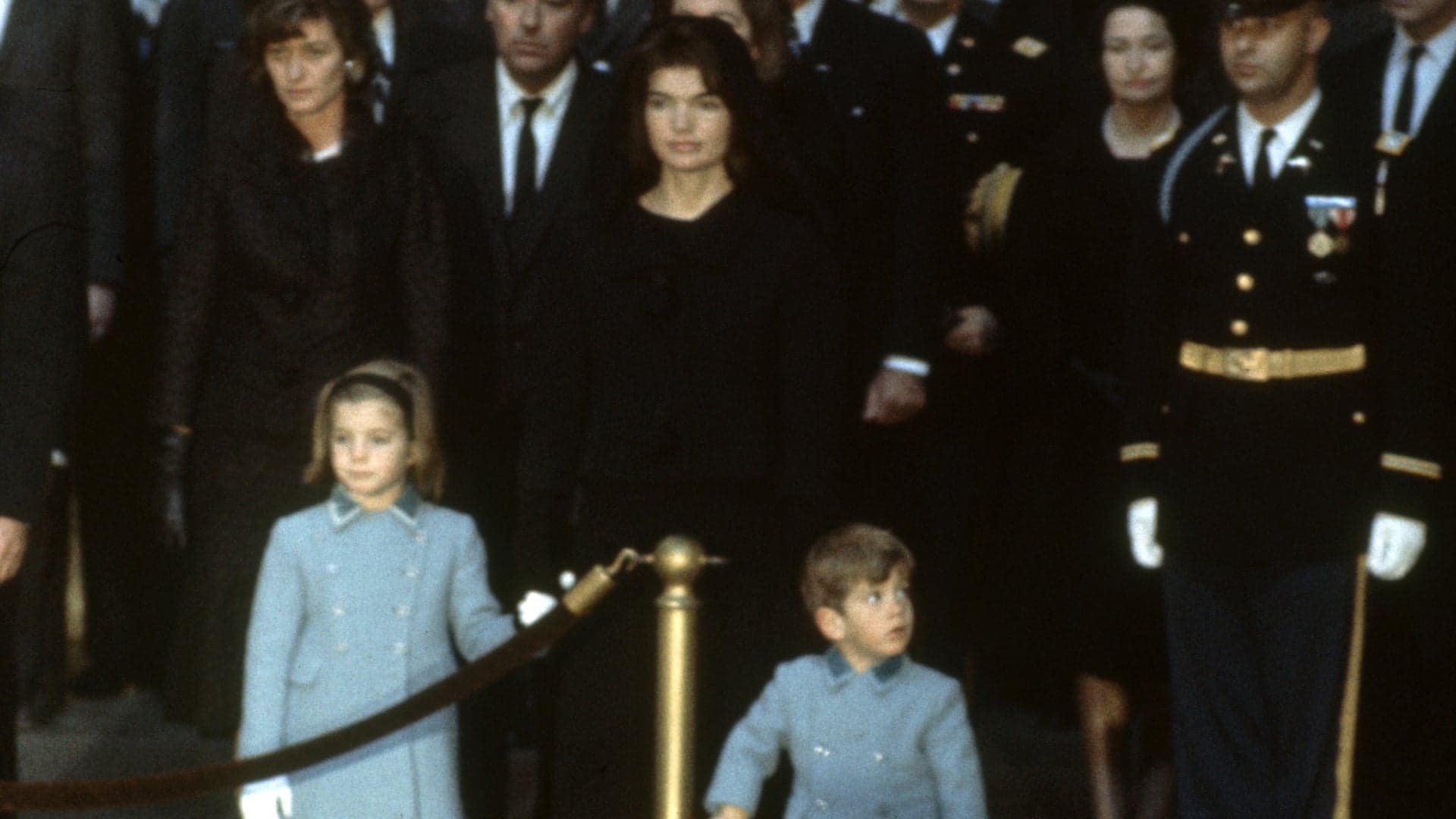John Fitzgerald Kennedy, the 35th president of the United States, is assassinated while traveling through Dallas, Texas, in an open-top convertible.
First lady Jacqueline Kennedy rarely accompanied her husband on political outings, but she was beside him, along with Texas Governor John Connally and his wife, for a 10-mile motorcade through the streets of downtown Dallas on November 22. Sitting in a Lincoln convertible, the Kennedys and Connallys waved at the large and enthusiastic crowds gathered along the parade route. As their vehicle passed the Texas School Book Depository Building at 12:30 p.m., Lee Harvey Oswald allegedly fired three shots from the sixth floor, fatally wounding President Kennedy and seriously injuring Governor Connally. Kennedy was pronounced dead 30 minutes later at Dallas’ Parkland Hospital. He was 46.
WATCH: JFK Declassified: Tracking Oswald on HISTORY Vault
Vice President Lyndon Johnson, who was three cars behind President Kennedy in the motorcade, was sworn in as the 36th president of the United States at 2:39 p.m. He took the presidential oath of office aboard Air Force One as it sat on the runway at Dallas Love Field airport. The swearing in was witnessed by some 30 people, including Jacqueline Kennedy, who was still wearing clothes stained with her husband’s blood. Seven minutes later, the presidential jet took off for Washington.
The next day, November 23, President Johnson issued his first proclamation, declaring November 25 to be a day of national mourning for the slain president. On that Monday, hundreds of thousands of people lined the streets of Washington to watch a horse-drawn caisson bear Kennedy’s body from the Capitol Rotunda to St. Matthew’s Catholic Cathedral for a requiem Mass. The solemn procession then continued on to Arlington National Cemetery, where leaders of 99 nations gathered for the state funeral. Kennedy was buried with full military honors on a slope below Arlington House, where an eternal flame was lit by his widow to forever mark the grave.
Lee Harvey Oswald, born in New Orleans in 1939, joined the U.S. Marines in 1956. He was discharged in 1959 and nine days later left for the Soviet Union, where he tried unsuccessfully to become a citizen. He worked in Minsk and married a Soviet woman and in 1962 was allowed to return to the United States with his wife and infant daughter. In early 1963, he bought a .38 revolver and rifle with a telescopic sight by mail order, and on April 10 in Dallas he shot at and missed former U.S. Army general Edwin Walker, a figure known for his extreme right-wing views. Later that month, Oswald went to New Orleans and founded a branch of the Fair Play for Cuba Committee, a pro-Castro organization. In September 1963, he went to Mexico City, where investigators allege that he attempted to secure a visa to travel to Cuba or return to the USSR. In October, he returned to Dallas and took a job at the Texas School Book Depository Building.
Less than an hour after Kennedy was shot, Oswald killed a policeman who questioned him on the street near his rooming house in Dallas. Thirty minutes later, Oswald was arrested in a movie theater by police responding to reports of a suspect. He was formally arraigned on November 23 for the murders of President Kennedy and Officer J.D. Tippit.
On November 24, Oswald was brought to the basement of the Dallas police headquarters on his way to a more secure county jail. A crowd of police and press with live television cameras rolling gathered to witness his departure. As Oswald came into the room, Jack Ruby emerged from the crowd and fatally wounded him with a single shot from a concealed .38 revolver. Ruby, who was immediately detained, claimed that rage at Kennedy’s murder was the motive for his action. Some called him a hero, but he was nonetheless charged with first-degree murder.
READ MORE: The Other Victims of the JFK Assassination
Jack Ruby, originally known as Jacob Rubenstein, operated strip joints and dance halls in Dallas and had minor connections to organized crime. He features prominently in Kennedy-assassination theories, and many believe he killed Oswald to keep him from revealing a larger conspiracy. In his trial, Ruby denied the allegation and pleaded innocent on the grounds that his great grief over Kennedy’s murder had caused him to suffer “psychomotor epilepsy” and shoot Oswald unconsciously. The jury found Ruby guilty of “murder with malice” and sentenced him to die.
In October 1966, the Texas Court of Appeals reversed the decision on the grounds of improper admission of testimony and the fact that Ruby could not have received a fair trial in Dallas at the time. In January 1967, while awaiting a new trial, to be held in Wichita Falls, Ruby died of lung cancer in a Dallas hospital.
The official Warren Commission report of 1964 concluded that neither Oswald nor Ruby were part of a larger conspiracy, either domestic or international, to assassinate President Kennedy. Despite its firm conclusions, the report failed to silence conspiracy theories surrounding the event, and in 1978 the House Select Committee on Assassinations concluded in a preliminary report that Kennedy was “probably assassinated as a result of a conspiracy” that may have involved multiple shooters and organized crime. The committee’s findings, as with those of the Warren Commission, continue to be disputed by some.
READ MORE: Why the Public Stopped Believing the Government about JFK’s Murder

